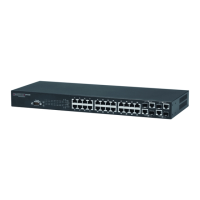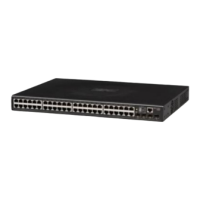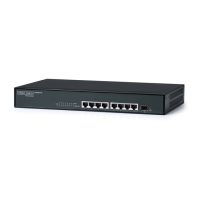System Management Commands
19-2
19
Example
System Status Commands
This section describes commands used to display system information.
show startup-config
This command displays the configuration file stored in non-volatile memory that is
used to start up the system.
Default Setting
None
Command Mode
Privileged Exec
Command Usage
• Use this command in conjunction with the show running-config command to
compare the information in running memory to the information stored in
non-volatile memory.
• This command displays settings for key command modes. Each mode group
is separated by “!” symbols, and includes the configuration mode command,
and corresponding commands. This command displays the following
information:
- MAC address for the switch
- SNTP server settings
- SNMP community strings
- Users (names and access levels)
- VLAN database (VLAN ID, name and state)
- VLAN configuration settings for each interface
- Multiple spanning tree instances (name and interfaces)
Console(config)#hostname RD#1
Console(config)#
Table 19-3 System Status Commands
Command Function Mode Page
show startup-config Displays the contents of the configuration file (stored in flash
memory) that is used to start up the system
PE 19-2
show running-config Displays the configuration data currently in use PE 19-4
show system Displays system information NE, PE 19-6
show users Shows all active console and Telnet sessions, including user
name, idle time, and IP address of Telnet clients
NE, PE 19-7
show version Displays version information for the system NE, PE 19-7

